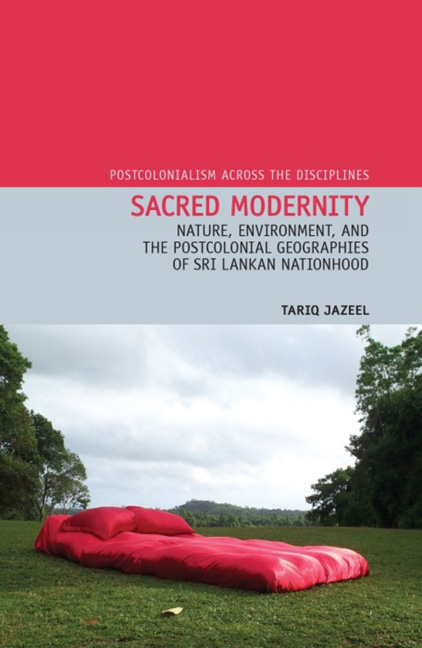Book contents
1 - Sacred Modernity: Nature, Religion, and the Politics of Aesthetics
Summary
Nature, Religion, Modernity
The epithet to the introductory chapter of this book quotes a passage from Michael Ondaatje's novel Anil's Ghost: a passage that refers to The National Atlas of Sri Lanka (1988), whose very first lines - as I stressed in the last chapter - forcefully assert the historical rootedness of Buddhist monasticism in Sri Lankan stone and soil. It is significant that such bold historical statem ents about the nativism of (Therevada) Buddhism within Sri Lanka are made within the pages of the country's first national atlas, for national atlases are precisely those kinds of texts that inscribe w ith cartographic authority the singular and sanctified geographical narratives of the nation state (Huggan 2008: 21-33; Harley 1988). As geographical inscriptions with the full authoritative weight of the state behind them, they are also thoroughly modern instruments. That is to say, they organize the material and environmental fabric of territory in rational, legible ways, deploying scientific and cartographic techniques of measurement, categorization, and taxonomy to articulate, instantiate, and ultimately help naturalize one of the most taken for granted political institutions of the postcolonial world: the nation state. So much so that when the national atlas makes such potent claims about Sri Lanka's pre-modern political and religiousorigins, thereislittlethatisp re-modern about the articulation of the claim itself. The modern is joined with the interest in knowing and defining the sign of the Sri Lankan national historically, traditionally, and nativistically. Like the two sites I explore in this book, the national atlas then is a typically modernist articulation in as much as it forges complex conjunctures, which, after Perry Anderson, exist at ‘the intersection of different historical temporalities’ (Anderson 1984: 104; also see Canclini 1995: 41-65).
My argument in this book is that in the context of attem pts to understand how the postcolonial Sri Lankan national has been - and continues to be - forged, nature and religion should not be considered as counterpoints to the modern, but instead as bound integrally to the project and politics of Sri Lankan modernity. Sacred history and modern ecotourism; transcendent environmental experience and architectural modernism…
- Type
- Chapter
- Information
- Sacred ModernityNature, Environment and the Postcolonial Geographies of Sri Lankan Nationhood, pp. 9 - 24Publisher: Liverpool University PressPrint publication year: 2013



